Ronald Chase was born in 1934, in Seminole, Oklahoma, a small oil town located near the Indian reservation. His grandfather had entered Oklahoma during Cimmaron, and had establish a lucrative business selling the first Ford cars in the state. As a child Chase studied dancing, drawing, music, singing and also dramatic reciting, somewhat unsual for a child in an oil town.
Chase left Oklahoma at the age of 17 to attend college in the Hudson Valley. He received a B.A. from Bard College in 1956. In 1957, he was asked to join the Jose Limon Company and to tour Europe with them that year. At the end of the Limon tour he settled in Torremolinos (near Malaga) to teach himself painting.
His summer's were spent on the Gaspe Peninsula, north of Montreal, in a small fishing village called Perce. Here he helped a friend develop an inn, the Auberge Au Pirate, created from a building that served as headquarters of the fishing industry that had prospered for a hundred years on the Gaspe coast. It was in the attic of this building Chase discovered records and artifacts that were the basis of his first recognized body of work—collages and paintings dealing with the history of the Gaspe. These works were featured in his first shows at the Gallerie Libre, Montreal in 1962-1964.
|
| |
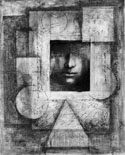 |
 |
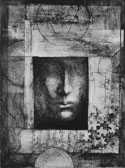 |
 |
|
In 1959 Chase was awarded a winter residency at the McDowell Colony, Peterborough, New Hampshire. He spent his winters there in 1961 and 1963, and his collages entered the collections of the Montreal Museum of Fine Arts and the Boston Museum of Fine Arts.
In 1964 Chase moved from New York to San Francisco, at the urging of his friend and collaborator in theater, Elizabeth Harris (a former dancer with the Limon Company). He established a studio at 136 Embarcadero, and worked first on a number of very large paintings using found photographs as model. The series, "Heroes of the Villiers-Cotterets" were a series of variations on the photograph of British and French troops posing for their photograph near a bridge at the end of World War I.
|
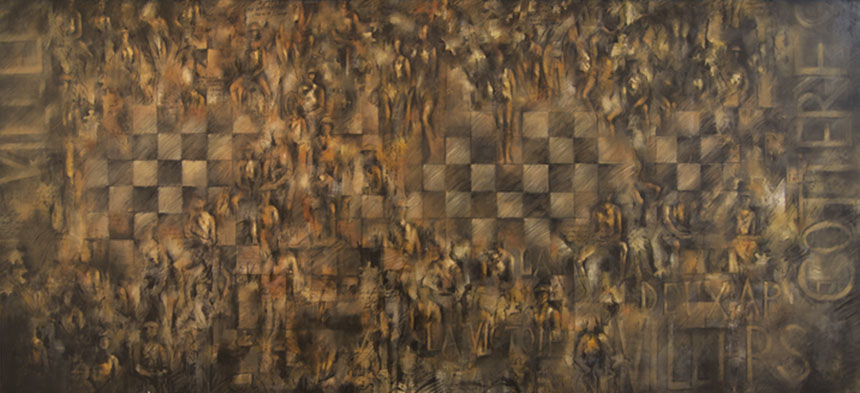 |
He then began a series of work using objects from games and childhood, which continued through the decade.
In an interview in 1966 (catalog, Triangle Gallery 1966), Chase remarks: "The idea of accumulation has become very important for me. All the objects I work with are things people have used or saved in their lives. Though I work abstractly, I consider much of my work to be portraits, but the portraits are collective and reflect the inner parts of people's lives."
|
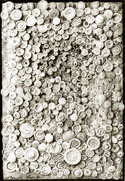 |
 |
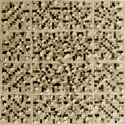 |
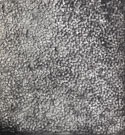 |
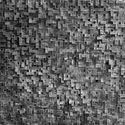 |
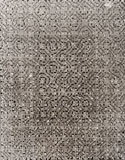 |
Alfred Frankenstein writes of BEFORE I DIE: (San Francisco Chronicle April 21,1966) "—may be the largest single work ever placed on view in a commercial gallery here, but the most remarkable thing about it is that it justifies its size. It celebrates the ideas, things, people that have played major roles in the artist's life. He has a very special passion for attaching numerous repetitive objects to a flat surface—jigsaw puzzle pieces, postage stamps, playing cards, coins, small photographs and quieting them to a murmur with lustrous paint. This large work includes a ship model as well as toy soldiers, and the effect of the whole is rather like the work of Joseph Cornell on a large scale, if that is not a contradiction in terms; at all events, the work has something of Cornell's poetry and imaginativeness as well as a visio-narrative complexity all its own. This is Chase's first show in the West Coast, and he is someone decidely to be watched, in the better sense of the phrase."
|
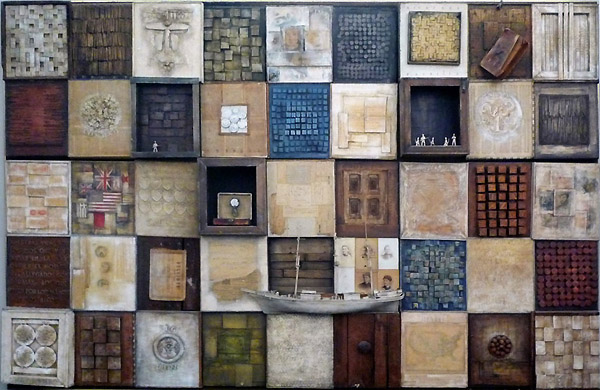 |
Chase's work becomes more three dimensional, and begins to expand in terms of size. He contintinues to exhibit at the Trialngle Gallery and in Montreal. His work is chosen for several group exhibitions, (including the now famous "box" show at the Byron Gallery) and he is given a retrospective of his work at the Croker Art Gallery in Sacramento in 1969.
|
 |
 |
 |
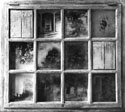 |
 |
 |
Towards the end of the decade, Chase becomes interested in blowing up found photographs, and creating three dimensional collages from this work. By 1969, Chase has begun his work with projections in Opera and has retrurned to his earlier interest in film.
|
 |
 |
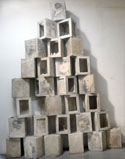 |
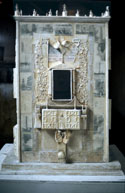 |
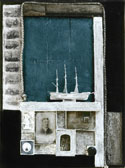 |
 |
|